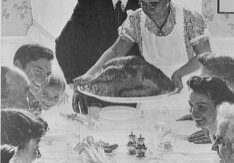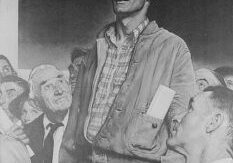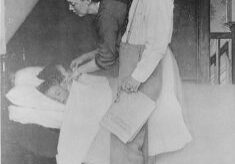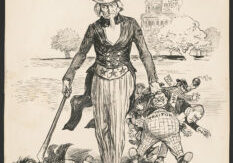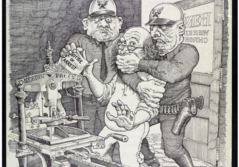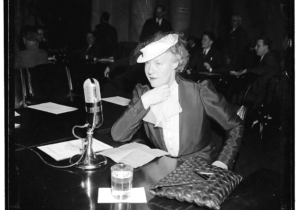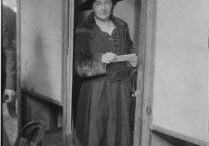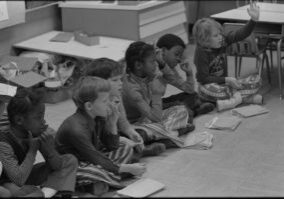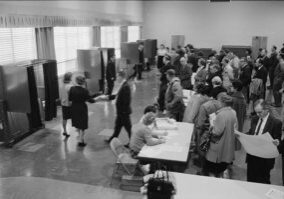Lesson Plans
Speaking Out: Four Freedoms Then and Now
Students analyze a part of Franklin Delano Roosevelt’s “Four Freedoms” speech and use primary sources from the Library of Congress to gain historical context. Next, students explore sources from the Library to draw conclusions about the impact of the speech on American culture at the time. Students then write their own “Four Freedoms” speech, outlining four freedoms they believe Americans should keep front-of-mind today.
Securing Our Freedoms Beyond the Bill of Rights
Students analyze primary sources from the Library of Congress including Norman Rockwell’s “Four Freedoms” and “The Bill of Rights” to the U.S. Constitution. Students then identify amendments related to two of the four freedoms from the primary sources and then work in small groups to reach consensus and propose a new amendment to secure rights or freedoms not included in the Bill of Rights.
Find Your Freedom Beyond the Bill of Rights
Students analyze primary sources from the Library of Congress to identify freedoms, then review background information about the Bill of Rights to the U.S. Constitution. Next, students match the amendments related to some of the freedoms they identified through analyzing sources and then work in small groups to reach consensus and propose a new amendment to secure freedoms not included in the Bill of Rights.
Espionage, Sedition, Censorship, and Speaking Up
Students analyze a political cartoon created by William Allen Rogers during World War I to give context to press censorship during that war. Next, students explore additional sources from the Library of Congress to analyze how censorship worked both before and after the passage of the Espionage and Sedition Acts of 1917-18. Finally, students compose their own “email to the editor” of a local newspaper or online news source, expressing their own views about the importance of freedom of the press and their informed opinion of press censorship in wartime.
Freedom of the Press, Censorship, and Sedition
Students explore freedom of the press as they examine sources related to government censorship of the press. After reviewing the First Amendment and the Sedition Act of 1798, students examine a political cartoon to discuss the relevance of freedom of the press over time. Finally, students design and create their own poster promoting freedom of the press today.
Journalists and a Free Press
Students learn about the crucial role journalists and reporters play in keeping the citizens in a democratic society informed about their community, the nation, and the world. First, students are introduced to the notion of “freedom of the press” from the First Amendment to the U.S. Constitution and discuss the role of journalists in reporting the news to us all. Next, students analyze primary sources related to famous journalists while referring to historical context for each in order to understand the important role these journalists played in their time. Finally, students create an issue of their own school newspaper to understand the responsibility their have as journalists to report accurately, fairly, and truthfully.
Race, the 14th Amendment, and Equal Protection
Students engages in inquiry and analysis using primary sources, role play, and discussions of racial discrimination. Students then use evidence-based claims to examine the 14th Amendment and university admissions procedures.
Voting: Rights and Responsibilities
In this three-part lesson students use primary sources to explore voting rights in the United States. In Part I, students analyze two sets of documents to gain a deeper understanding of how suffrage has been both expanded and suppressed, developing claims about how voting rights impact equality. In Part II, students further analyze one of the documents from Day One before taking on the role of a congressional committee charged with amending (or not) the Voting Rights Act to require compulsory voting. In Part III, students write their answer to the Essential Question, informed by class discussion and primary source analysis.
Education and Equality in the Courts
Students analyze primary sources related to equality in education in the United States. In Part I, students analyze two sets of primary sources that illustrate major transformations in American public education following both the Mendez v. Westminster (1947) federal case and the Brown v. Board of Education (1954) Supreme Court case. In Part II, students participate in a moot court activity about expanding equality for undocumented immigrant and legal-resident or citizen students in the historic Supreme Court case of Plyler v. Doe (1982). Students then write their answers to questions about the role of equality in public education.
Does Every Vote Count?
Students analyze primary sources to examine examples of voting, then discuss who votes and how ballots have changed to make voting equitable for all eligible voters.
